
(JERF-PCSI) Jump Engine Radiation Filter Preparation Cooling Sequence Input
This is a small part of a big game more info about the actual game: link. This small project was done by me and 2 of my friends as an internship project from school. I hope you all have fun and please write if there is something we should have done differently or any other advise
This game needs to be played in full screen for it to work. please zoom out till you see the fullScreen button by ("Ctrl"+"-") and play the game in fullScreen. (tried fixing it but didn't work. if anyone knows how i can fix this please tell me)
instructions (you can go to the Collaborating prep for instructions only) + fluff + desktop version↓ (you can also download a pdf version)
Jump Engine Radiation Filter Preparation Cooling Sequence Input (JERF-PCSI)-manual page: 2.11 - 1
The Jump Engine Radiation Filter Preparation Cooling Sequence Input (JERF-PCSI) system is a critical component of the battlespaceship's operation, ensuring the efficiency and safety of interstellar travel. Its primary function is to manage and regulate the cooling system for the Jump Engine, protecting the vessel from radiation exposure during faster-than-light travel.
The operation of the JERF-PCSI system begins with the calibration of coolant flow rates and thermal conductivity matrices, a process essential for optimal performance. This calibration is achieved through the precise adjustment of parameters based on sensor data and predefined algorithms.
During the activation of the Jump Engine, the JERF-PCSI system activates its radiation filters, which are composed of nanostructured materials designed to intercept and neutralize ionized particles encountered in hyperspace. These filters are integrated into the cooling conduits, providing a robust defense against radiation-induced damage to the ship's systems and crew.
By effectively managing radiation exposure, the JERF-PCSI system ensures the integrity of the battlespaceship throughout its journey across the cosmos. Its reliable operation is essential for maintaining the safety and functionality of the vessel during interstellar travel.
The displayed grid refreshes due to a failsafe protocol embedded within the Jump Engine's operating system. When the grid configuration is incorrect, it disrupts the synchronization of the cooling modules, leading to a misalignment of thermal pathways. This misalignment could cause localized overheating. To prevent this, the system resets the grid to its default state, allowing the cooling system to stabilize and realign correctly before attempting another configuration. The Jump Engine's cooling system operates using a dynamic thermal management algorithm, and thus needs precise information on coordinates. When incorrect data is detected, it indicates a potential fault in the thermal distribution network, or human error. The algorithm interprets this as a signal to reset the grid to avoid creating hotspots that could compromise the structural integrity of the engine's core components. This automatic reset ensures that the cooling system can reassess and optimize heat dissipation before the engine reaches critical temperature thresholds.
You are equipped with two critical terminals. Terminal 1 (T1) is strategically positioned within the engine core chamber, while Terminal 2 (T2) is situated within the thermal cooling reactor module. This high-level maintenance procedure should be conducted annually, or ideally post-jump, to ensure the next quantum leap is executed with peak efficiency.
Initiate the sequence by inputting the administrator access code as outlined in this manual into Terminal 2 (T2). Utilize radio communicators, as the operation mandates simultaneous engagement of both terminals.
Attention: Terminal 1 (T1) is located in a high-risk zone. Engineering personnel must be equipped with appropriate protective gear, and system shutdown is strongly recommended, albeit not compulsory. The provider advises performing this cooling maintenance during docked intervals for comprehensive hull and system repairs. If maintenance must occur during active operations, ensure the engineer is thoroughly trained and fully prepared. Preemptive radiation mitigation measures are imperative, and consulting on-duty medical officers is mandatory. Expedite the procedure to minimize occupational hazards. Follow the specified protocol for area code input, ensuring clear and calm communication of grid data. In the event of an error, refer to this manual for corrective codes or additional instructions.
Collaborating prep:
the screen of the terminal is a little broken. many have tried to fix it but couldn't so the crew of the spaceship have come up with a workaround. the crew first zooms out of the screen with "ctrl" + "-" and clicks the full-screen button when they see it. This seems to work for the time but the spaceship crews are still trying to find a permanent fix.
Before you can start collaborating you need to Confirm your terminal and start it. This is really easy. If you are in Terminal 1 (T1) press W + 1 and if you are in Terminal 2 (T2) press W + 2
Login Procedures:
To access the system, input the designated Engineer Code. These codes are essential for identity verification and maintaining system security. Refer to the Engineer Code list at the end of this section. The codes are organized under different labels (a, b, c, d) and (1, 2, 3, 4). Ensure you select the correct label as per the system's current guidance. Enter the chosen Engineer Code into the system.
If an incorrect Engineer Code is entered, the system will deny access. Use an Admin Code to override the error and gain entry. Locate the corresponding Admin Code from the list provided at the end of this section. It is crucial to select the Admin Code from the appropriate label (a, b, c, d) and (1, 2, 3, 4) according to system guidance. Carefully enter the Admin Code to bypass the error and log in successfully. Upon entering the correct code, the system will verify your credentials. Successful verification grants access to the Jump Engine preparation system.
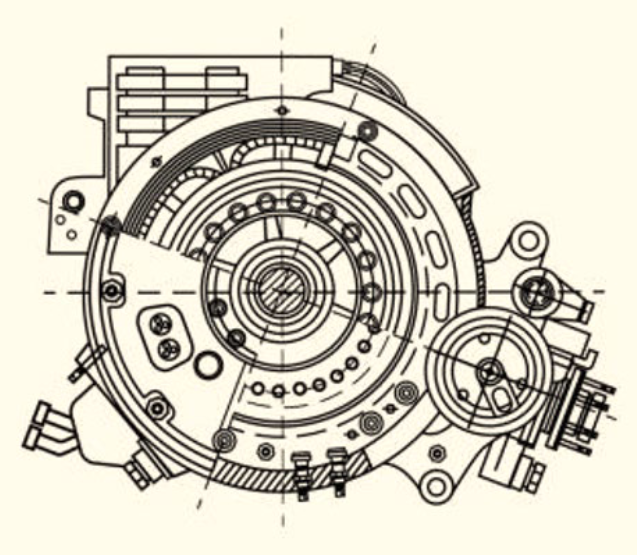
Diagram of a cooling piston used Onboard Corverre class battleships. These filters are integrated into the cooling conduits, providing a robust defense against radiation-induced damage
Terminal 01 (T1) Operations:
The engineer operating in sector T1 needs to communicate with T2 in the beginning to get the correct area code. The area code can be found under the map displayed on T2. after a correct area code has been input it should start loading the console view. After the console view has loaded the general information to clean the cooling pipes will be displayed on screen. To move the piston you need to use one of the movement commands. After moving the piston text should be displayed on screen to confirm the movement and you should be able to see the current position change in the bottom left corner.
Area code: area code is an identifier for each different cooling pipe and is necessary to know where to move the piston
Cooling pipes: Pipes to cool the ship’s different parts using the cooling fluid
The piston: the piston is a mechanical device used for cleaning the cooling pipes mainly for micro Xytrons
Movement commands: Movement commands are specific commands to move the piston. Movement commands can be used in the console in T1 and work by first typing the direction you want to go either right, left, up, or down then typing the amount of units you need to move with a space in between. In the end the command should look something like this “left 4” or “down 2” etc.
Note: any command that requires 2 things to be typed for example the info command needs a space in between the 2 things that have been typed
Terminal 02 (T2) Operations:
The engineer operating in T2 has to manage cooling while communicating with the person in T1 about where to move the pistons inside the cooling pipes using the correct coordinates.
The engineer at Terminal 2 (T2) manages cooling while coordinating with T1 on piston movements within the cooling pipes using precise coordinates.
T2 personnel will view a map and area code, which they must relay to T1 to match the map. T2 must instruct T1 on movements by indicating direction and the number of units (e.g., left 1, right 5, up 3, down 6). There will be a rover marking where the piston is located at the start. Do not count the panel your piston rover is in. Count the following panel till the next turn. After completing the map, T2 should press the "Next Map" button to proceed.
Cooling management involves redistributing 200 liters of cooling fluid across the engine. The fluid quantity remains constant, requiring strategic repurposing. Monitor the temperature closely; it will rise steadily and may increase more rapidly at intervals. If the temperature exceeds 100 degrees, a warning will appear over the map. A temperature color change to red will signal a warning if it surpasses 75 degrees.
You can also click the info button for information while playing the game.
CODES for -Jump Engine Radiation Filter Preparation Cooling Sequence Input (JERF-PCSI)
Engineer code
| 1 | 2 | 3 | 4 | |
| a | gH2d-jfF0-yhdV | m93K-if8B-WUf2" | r87H-if9Z-XUd3 | VYcu-3wFh-c8ur |
| b | XJ7k-l9U3-wp7Q | Lm8d-K4h2-nRu8 | JF3s-bU7f-ty9E | Rp6Q-mE8j-kU2T |
| c | Bnvc-4u5S-dk3m | ri4D-u29t-juCe | zgae-Mlev-JBt8 | Itev-vKh4-vg9c |
| d | FWv7-92oU-0k5T | Zi3e-Jszf-KD4t | wrfs-tUDC-mleB | Jgi5-tken-vgFa |
Admin code
| 1 | 2 | 3 | 4 | |
| a | fHD2-jfU0-shdU | u93H-if9A-VUe3 | u93H-if9A-VUe3 | FEcu-2uFh-b8gr |
| b | Ifh4-fUDe-OAwf | JOIw-4iD5-gu9D | hgU8-AHS3-ufeu | hvuF-suh5-cusn |
| c | Antc-3u4S-dh2j | hi3D-u59s-iuCe | ifae-Ohev-KAt9 | Huev-uAh3-uf9a |
| d | HWv6-83nU-0i4S | Yi2e-Iryf-JD5s | irfs-rUDA-kleA | Hfi5-sjen-ufFa |
| Status | Released |
| Platforms | HTML5, Windows |
| Author | SillyLix |
| Genre | Puzzle |
| Made with | Unity |
| Tags | Graphical User Interface (GUI), jerf-pcsi, Space, student-project, Two Player |
| Average session | A few minutes |
| Languages | English |
| Inputs | Keyboard, Mouse |
Download
Development log
- JERF-PCSI devlogJul 12, 2024
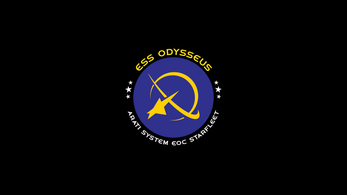
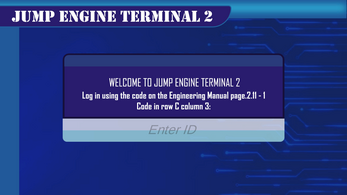
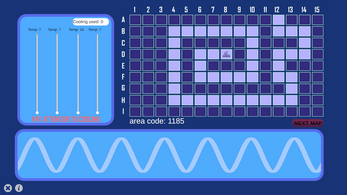
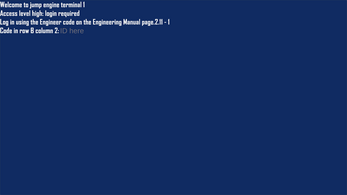
Leave a comment
Log in with itch.io to leave a comment.